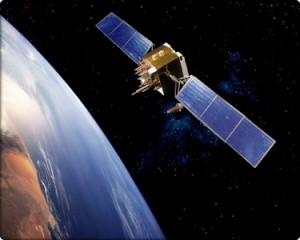Flight 447: Small airplane, big ocean
Now that searchers have found wreckage from Air France Flight 447, we can hope they’ll also locate the data recorders and solve the mystery of what happened, which could lead to safety improvements on future flights.But earlier this week, it appeared that just locating the downed airliner in thousa…

Now that searchers have found wreckage from Air France Flight 447, we can hope they’ll also locate the data recorders and solve the mystery of what happened, which could lead to safety improvements on future flights.
But earlier this week, it appeared that just locating the downed airliner in thousands of square miles of ocean would be a needle-in-a-haystack problem. Which begs the question: How, in this age of GPS and handheld personal tracking devices, can anyone, let alone a state-of-the-art Airbus A330, go missing?
It turns out that ocean-crossing airliners are still well back in the 20th century when it comes to communications and navigation. Once they’re out of sight of land-based radar, their position is known only from regular radio calls by the pilots enroute. Typically, these calls (which can be automated if the airplane is equipped with a satellite uplink service) happen at waypoints spaced every ten degrees of longitude. Some airliners, but not all, also transmit automated data on their engine performance, velocity, fuel level, etc. It was these kind of data, using a system called ACARS, that told the grim tale of Flight 447's failing electrical system and cabin depressurization.
But otherwise, there's no contact between waypoints. At the equator, ten degrees of longitude is 600 miles. That's a long way to go with no position report, and a lot of ocean to cover in these extremely rare and tragic cases where rescue teams have to hunt for survivors.
Why, then, aren't all airliners equipped with GPS? Well...they're working on it. A new satellite-based system called Required Navigation Performance, or RNP, is slowly being adapted. The FAA estimates that 30% of the U.S. fleet is RNP-capable today (which is not to say it's being used by all those airplanes). And the entire Air Traffic Control system is due to be replaced over the next 15 years by the so-called NextGen, which would use satellite navigation to replace or supplement the old system of overlapping radars. But NextGen is complicated, expensive, and prone to political foot-dragging.
So will this accident help speed up the shift to GPS? A pilot friend who flies airliners across the ocean writes: "It does seem that in today's world there should be constant position reporting. I think the reason is cost; satellite communication isn't a free utility. However, it would be nice if there were some sort of 'Panic Button' (though named something else...pilots don't really like to consider themselves in a panic no matter what the situation) that could be pushed to initiate a continuous stream of Lat/Lons. This would give a tremendously helpful trend vector for any search and rescue."